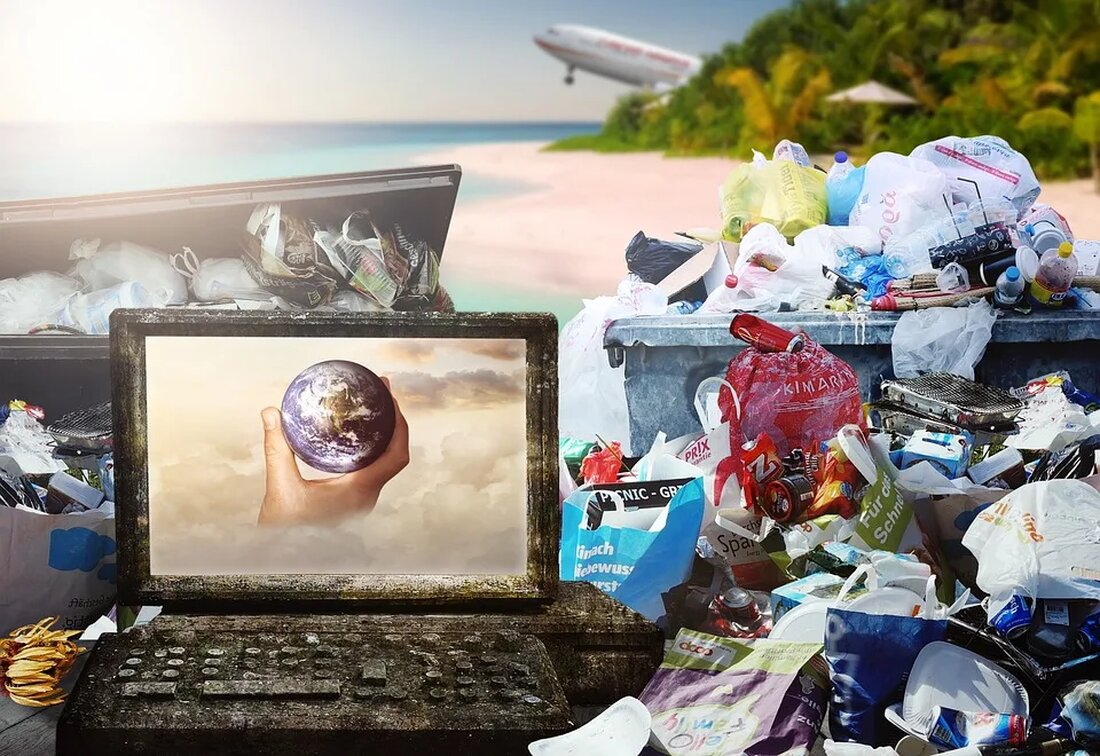Alternativas sustentáveis ao plástico
O plástico está em todo o lado: nas nossas cozinhas, casas de banho, supermercados e até nas nossas roupas. Por ser um material barato, durável e prático, o plástico é difícil de superar. Mas, apesar da sua conveniência, o plástico tem um custo elevado para o meio ambiente. Todos os anos, milhões de toneladas de resíduos plásticos acabam nos nossos oceanos e paisagens, prejudicando os ecossistemas e a vida animal. Além disso, os recursos necessários para produzir plástico também são insustentáveis. Há, portanto, uma necessidade urgente de alternativas ao plástico que sejam mais sustentáveis e amigas do ambiente. Bioplásticos O que são bioplásticos? Bioplásticos são plásticos feitos de matérias-primas renováveis, ao contrário...

Alternativas sustentáveis ao plástico
O plástico está em todo o lado: nas nossas cozinhas, casas de banho, supermercados e até nas nossas roupas. Por ser um material barato, durável e prático, o plástico é difícil de superar. Mas, apesar da sua conveniência, o plástico tem um custo elevado para o meio ambiente. Todos os anos, milhões de toneladas de resíduos plásticos acabam nos nossos oceanos e paisagens, prejudicando os ecossistemas e a vida animal. Além disso, os recursos necessários para produzir plástico também são insustentáveis. Há, portanto, uma necessidade urgente de alternativas ao plástico que sejam mais sustentáveis e amigas do ambiente.
Bioplásticos
O que são bioplásticos?
Os bioplásticos são plásticos feitos de matérias-primas renováveis, em oposição aos plásticos tradicionais feitos de petróleo. Alguns exemplos de bioplásticos incluem ácido polilático (PLA), polihidroxialcanoatos (PHA) e plásticos à base de amido, feitos de plantas como milho, cana-de-açúcar e batata.
Vantagens dos bioplásticos
A principal vantagem dos bioplásticos é que são feitos a partir de recursos renováveis, ajudando a reduzir a dependência dos combustíveis fósseis. Alguns bioplásticos também são biodegradáveis e compostáveis, o que significa que se decompõem naturalmente sob certas condições, reduzindo a quantidade de resíduos plásticos. Além disso, os bioplásticos também podem absorver dióxido de carbono (CO2) da atmosfera, ajudando a reduzir as emissões de gases com efeito de estufa.
Desvantagens e desafios dos bioplásticos
Embora os bioplásticos ofereçam muitos benefícios, eles também apresentam alguns desafios. Um desses desafios é que nem todos os bioplásticos são biodegradáveis ou compostáveis. Na verdade, muitos bioplásticos são concebidos para serem tão duráveis e estáveis como os plásticos tradicionais. Além disso, a degradação dos bioplásticos compostáveis requer condições especiais que não estão presentes na maioria das instalações de compostagem comerciais.
Alternativas comestíveis
Embalagem comestível
Outra alternativa interessante ao plástico são as embalagens comestíveis, que geralmente são feitas de alimentos como algas ou proteínas. Essas embalagens podem ser facilmente consumidas ou compostadas após o consumo do produto.
Talheres e pratos comestíveis
Além disso, talheres e louças comestíveis também estão se tornando cada vez mais populares. Esses produtos são geralmente feitos de ingredientes como trigo, arroz ou sorgo e podem ser facilmente consumidos ou compostados após o uso.
Sistemas reutilizáveis
O que são sistemas reutilizáveis?
Sistemas reutilizáveis são sistemas nos quais as embalagens podem ser limpas e reutilizadas após o uso. Esses sistemas podem ser usados de diversas maneiras, por exemplo, para garrafas de bebidas, embalagens de alimentos e sacolas de compras.
Vantagens dos sistemas reutilizáveis
As vantagens dos sistemas reutilizáveis são óbvias: reduzem a quantidade de resíduos, o que é um problema significativo, e poupam recursos porque é necessário produzir menos embalagens novas. Além disso, os sistemas reutilizáveis também economizam energia e água utilizada na produção de embalagens descartáveis.
Desafios na implementação de sistemas reutilizáveis
No entanto, a implementação de sistemas reutilizáveis pode ser um desafio. Requer uma limpeza completa das embalagens devolvidas para garantir a segurança e a higiene, o que consome recursos e energia adicionais. Deve também ser criado um sistema de recolha eficiente para garantir que as embalagens são efectivamente devolvidas e reutilizadas.
Vidro e metal
Outra abordagem para reduzir os resíduos plásticos é utilizar materiais mais duradouros, como vidro e metal, que possam ser reutilizados e reciclados.
Vidro
O vidro é um material natural feito de areia, soda e cal. É totalmente reciclável e pode ser reutilizado infinitamente sem perda de qualidade.
metal
O metal, especialmente o alumínio, é outro material durável e de alta qualidade que pode substituir o plástico. O alumínio também pode ser reciclado infinitamente sem perder a sua qualidade.
conclusão
É claro que não existe uma solução única para a substituição do plástico. Cada alternativa tem as suas próprias vantagens e desvantagens e muitas vezes é uma questão de compromisso quanto à melhor alternativa. No entanto, é importante que nos esforcemos ativamente para encontrar alternativas mais ecológicas e sustentáveis ao plástico. Com inovações criativas e decisões conscientes, podemos dar um contributo positivo para a redução da poluição plástica e para a proteção dos nossos valiosos recursos naturais.

 Suche
Suche
 Mein Konto
Mein Konto
